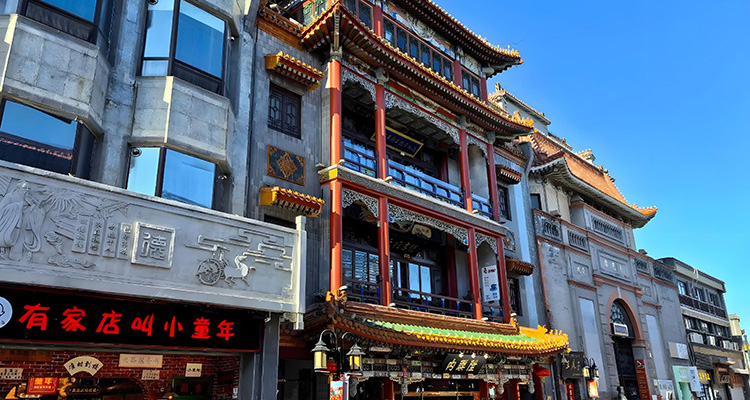Beijing Dashilan: Historic Street of Old Shops, Hutongs & Culture
1. A Quick Introduction
Beijing Dashilan (pronounced Dàshílànr) is a historic commercial district that has thrived since the Ming and Qing dynasties. Located just west of Beijing’s central axis, it was once the city’s busiest trade hub. Today, it still preserves its grey-brick hutong charm and traditional time-honored shops, earning the nickname: “A Living Folk Museum Through Time.”

2. History and Architectural Charm
Dashilan was established during the Ming Dynasty in the 15th century, named after the wooden fences once set up here to prevent theft. By the Qing Dynasty, it had transformed into a bustling commercial center filled with theaters, banks, and pharmacies.
Walking down the street, you’ll notice a mix of architectural styles: Chinese wooden shopfronts, arcades blending East and West, and even decorative elements from the Republic of China era. The result? A tightly knit network of narrow alleys, small shops, and busy lanes—one of Beijing’s best-preserved traditional commercial districts.

3. Must-Try Experiences
- Treasure Hunting at Old Shops
- Neiliansheng Cloth Shoes (founded in 1853), known for their handmade “thousand-layer sole” shoes
- Ruifuxiang Silk Store (since 1862), offering custom traditional clothing
- Tongrentang Pharmacy (since 1669), displaying herbal medicine traditions
- Cultural Landmarks
- The Deyun Crosstalk Theater, where you can enjoy traditional Chinese comedy
- Daguanlou Cinema, the birthplace of Chinese film
- Street snacks hidden in hutongs, like candied hawthorns and almond tea

4. Easy Touring Guide
- Suggested Route: Start at Zhengyangmen Arrow Tower → walk along Qianmen Street → Dashilan West Street → Yangmeizhu Xiejie. Plan for a 2–3 hour stroll.
- The district is open to the public for free, and many shops provide English product descriptions.
- Stone-paved roads are mostly flat, though some hutongs are narrow—wear comfortable shoes.
- Visit between 4:00–8:00 PM for the evening lights that add extra charm.

5. Getting There and Nearby Attractions
- Take Subway Line 7 to Zhushikou Station, Exit D, and walk 5 minutes.
- Hop on the vintage Qianmen Trolleybus for a nostalgic ride.
- Combine your visit with nearby landmarks like Tiananmen Square and the Forbidden City for a one-day tour.
- The area also offers boutique hutong guesthouses and trendy coffee shops.
6. Useful Information
- The district is open 24 hours, while most shops operate from 9:00 AM – 9:00 PM.
- No tickets are required, though crowd control may be in place during holidays.
- Most stores accept mobile payments, though some old shops still prefer cash.
- Festive highlights include Spring Festival temple fairs and Mid-Autumn lantern shows, when the area becomes especially lively.

(Tip: Business hours may vary by season—check updates before your trip.)


